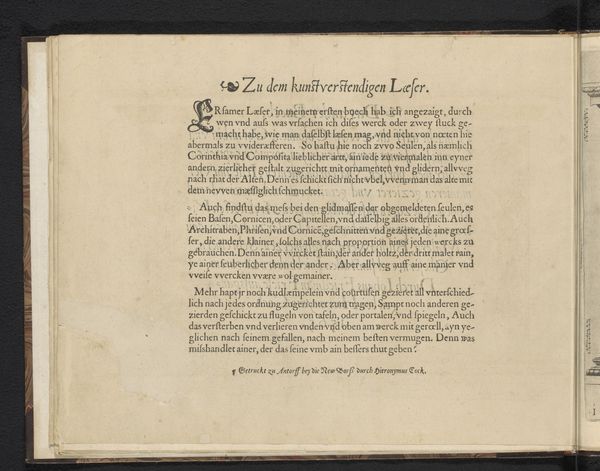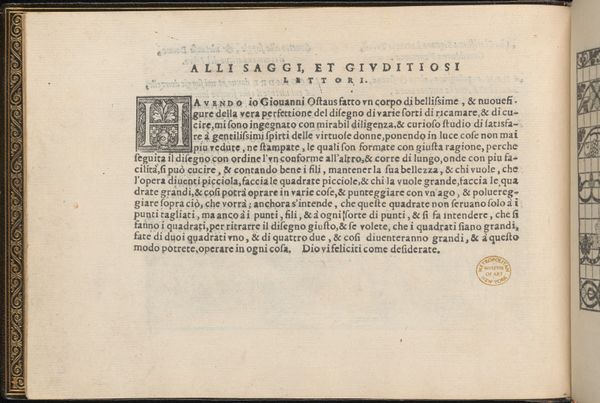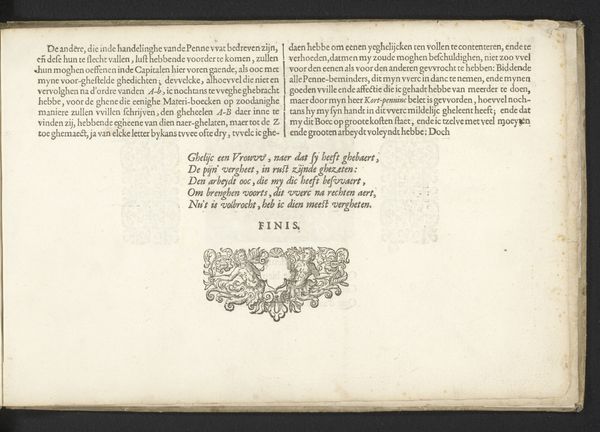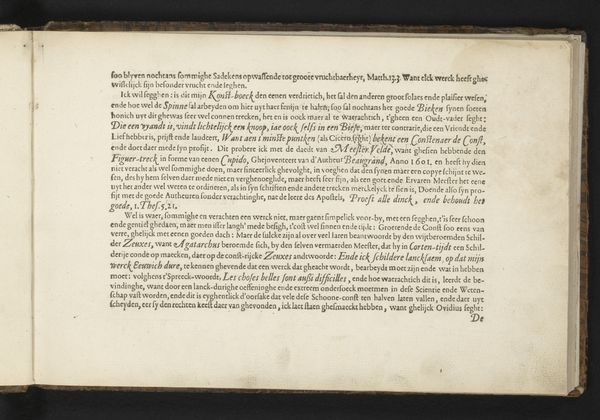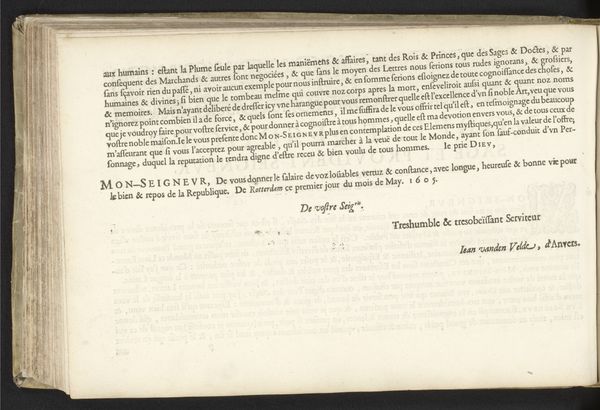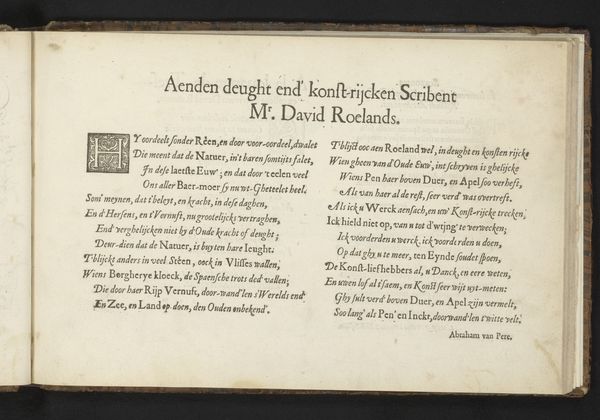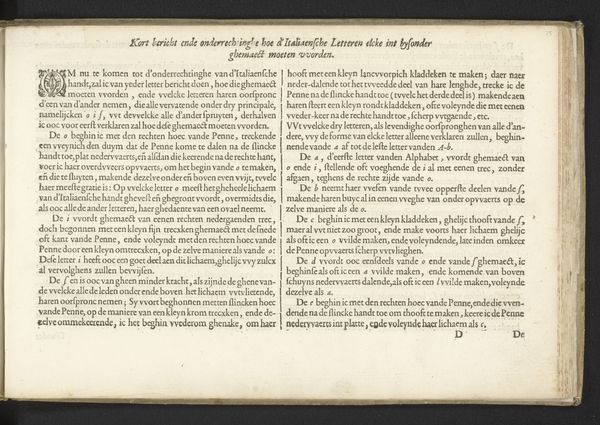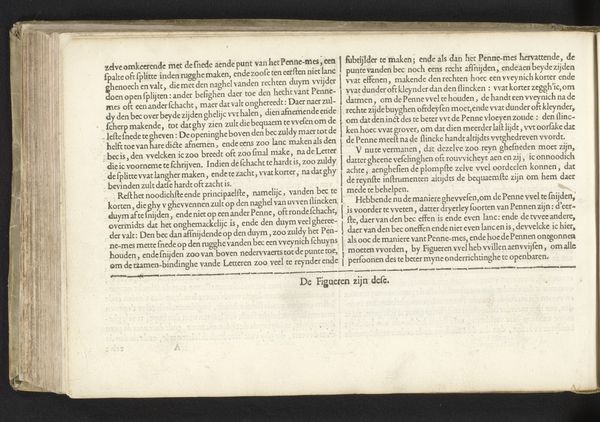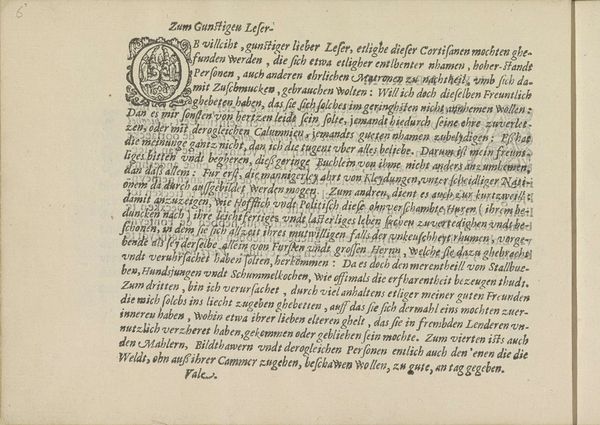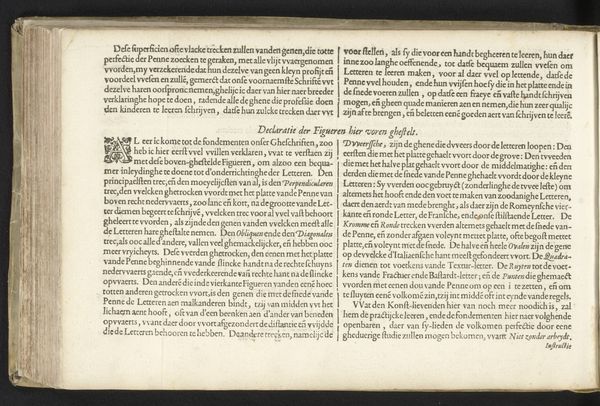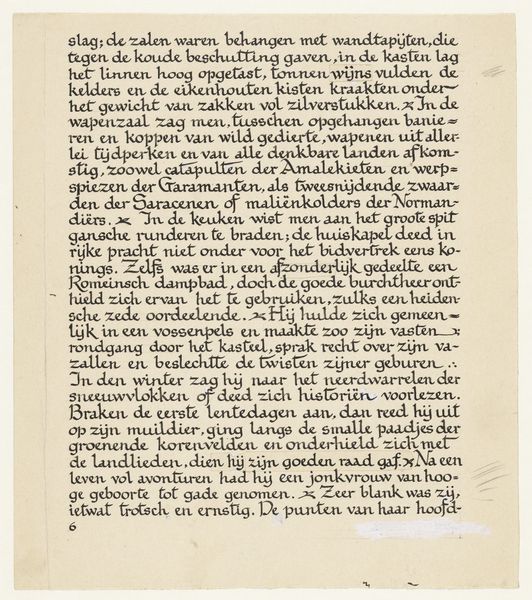
Titelpagina voor: Das ander Buech gemacht auff die zway Colonnen, Corinthia und Composita 1565
0:00
0:00
johannesoflucasvandoetechum
Rijksmuseum
print, paper, typography, engraving
# print
#
paper
#
typography
#
history-painting
#
northern-renaissance
#
engraving
Dimensions: height 262 mm, width 335 mm
Copyright: Rijks Museum: Open Domain
Curator: I’m drawn to the way the light seems to pool on the page. It gives the whole thing this quiet, contemplative feel, even though it's just…words. Editor: Indeed. What you’re responding to is the engraving “Titelpagina voor: Das ander Buech gemacht auff die zway Colonnen, Corinthia und Composita.” It's the title page for a book on Corinthian and Composite columns, dating back to 1565. It's part of the Rijksmuseum's collection. Produced by Johannes and Lucas van Doetechum, this piece represents a fascinating intersection of typography and design. Curator: Typography as design! Yes, I see it. It feels like they're trying to build something, you know? All those capitalized words are like little pillars themselves. Does it read as architectural in its time? Editor: Absolutely. The print offered practical guidance, a resource for artisans—from painters to stonemasons—exploring classical architectural forms in the Northern Renaissance. Disseminated via printmaking, knowledge of classical orders was no longer exclusive to Italian architects. This opened up possibilities for more hybrid, cross-cultural designs to emerge across Europe. Curator: It's funny to think about this level of precision and instruction being available so widely. Like a really fancy DIY guide! Did this affect architectural styles at all? Editor: Without question. The book made available, disseminated by figures like Hieronymus Cock, impacted design and building practices in northern Europe. Notice, this title page serves as a kind of advertisement, declaring the contents within offer "more adornment and beauty". The very act of printing and circulating this design spoke to a shift in the way people could engage with aesthetics and architectural styles. Curator: So it wasn't just about the buildings, but about how ideas themselves were being built and shared. It reminds me that art can be a blueprint for so much more. Editor: Precisely. I find this a lovely example of how prints played an important role in the democratization of art.
Comments
No comments
Be the first to comment and join the conversation on the ultimate creative platform.
